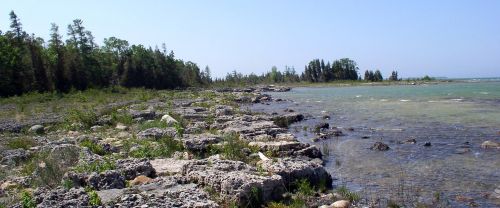The Importance of Reducing Phosphorus Discharge

By Ted Briggs, Ontario Ministry of the Environment and Climate Change
The Great Lakes Water Quality Agreement is a commitment between the United States and Canada to restore and protect the waters of the Great Lakes for everyone to enjoy for generations to come. The agreement provides a way for the two countries to set and agree on priorities for actions that improve water quality.
One of the key issues the agreement addresses is the problem of excess nutrients, such as phosphorus. Phosphorus is an important nutrient for plant growth, but when it runs off the land and into the lake in high concentrations it can result in harmful algae blooms.
Under the nutrient reduction section of the agreement, the United States and Canada will work to establish phosphorus targets for each of the Great Lakes while continuing to assess and implement actions designed to manage excess phosphorus from urban and rural sources.
Within Lake Erie, large algal blooms have begun to resurface over the past several years resulting in Lake Erie being identified as the first Great Lake to undergo a review of the lake’s phosphorus concentration and loadings targets.
In February of 2016 the United States and Canada announced a phosphorous reduction target of 40 per cent for Lake Erie. These reductions will occur through the development of an action plan to implement remedial projects targeting priority watersheds, such as the Leamington tributaries and Thames River watersheds, within the Lake Erie basin.
In the next few years the federal governments, in cooperation and consultation with state and provincial governments, tribal governments, First Nations, Métis, municipal governments, watershed management and other local public agencies, and the public, will begin work to develop phosphorus concentration and loading targets for Lake Huron.
Importance of reducing phosphorus discharge
While work is underway, communities can act to protect and restore their corner of the Great Lakes and implement initiatives to reduce phosphorus runoff. As part of Ontario’s Great Lakes Strategy, the Great Lakes Community Guardian Fund provides funding for not-for-profit organizations, First Nations, and Métis communities for local projects that help protect and restore the Great Lakes. To learn more visit:
